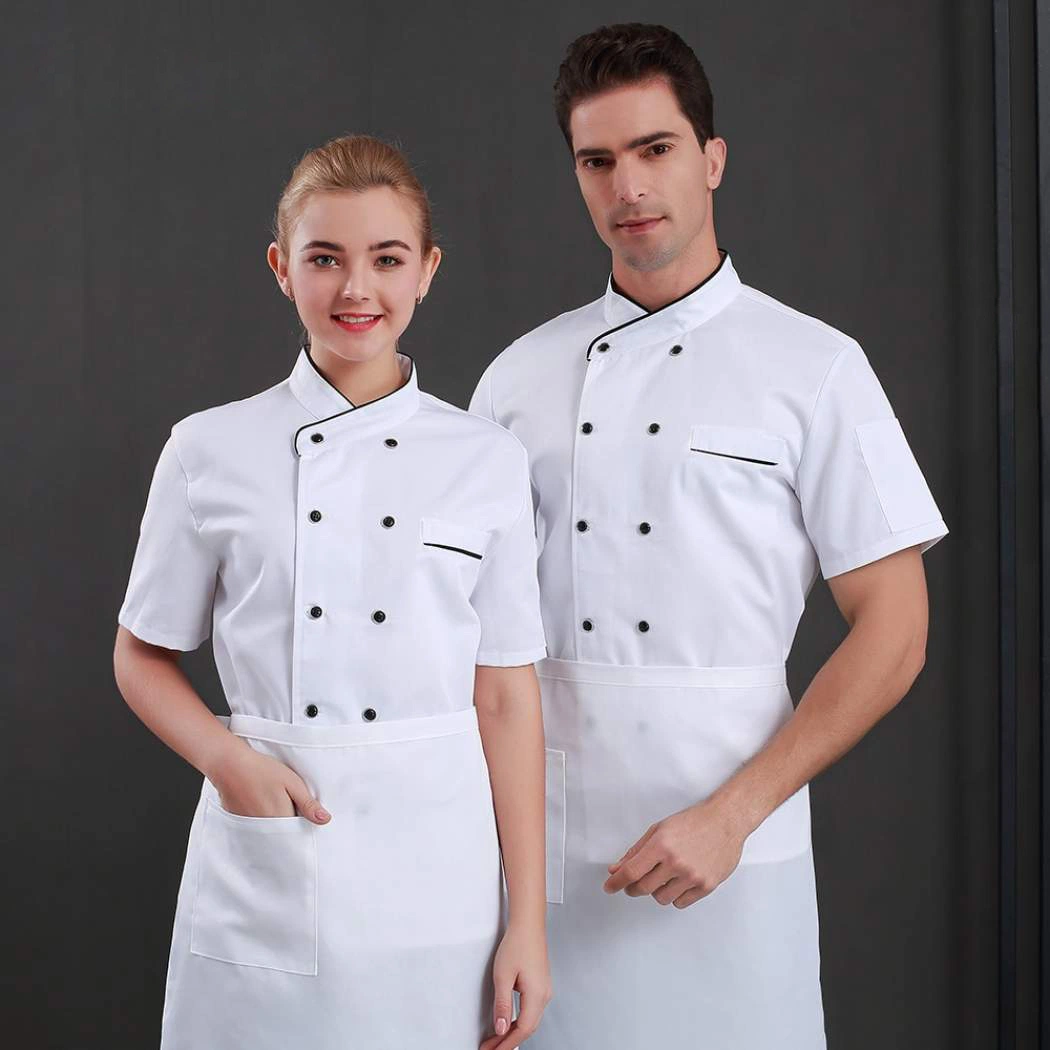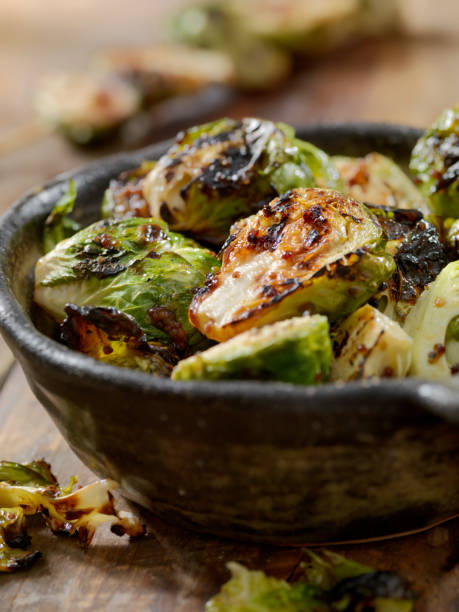Retail, healthcare, and many manufacturing environments adopt uniforms for their staff. Even those workplaces without a uniform still tend to have guidelines for a proper dress code. For example, in office and education environments, they may request ‘business casual.’
Wearing a uniform in the hospitality industry is crucial for both employees and customers. Wearing a uniform is a great way to make front-of-house staff more identifiable while maintaining a professional appearance. Uniforms are important for employees who perform more behind-the-scenes work, like chefs and kitchen porters. They help to maintain safety and health standards. It’s important to understand the importance of wearing the right uniform when you work in hospitality.
Why wearing a chef uniform is important
Food safety law, such as the Food Safety Act of 1990, states that anyone who is in contact with food, regardless of their role, has the responsibility to make sure the food prepared by them is safe for consumption. While this is a general statement about the importance of food being stored and prepared in a safe manner, wearing a uniform as a chef is an important part of maintaining food safety. Three main reasons are why chefs uniforms should always be worn when working in the food preparation area.
Food Hygiene
The correct protective clothing must be worn by chefs and kitchen assistants in the areas where food is prepared. This will ensure that contaminants such as hair or dirt on clothing do not contaminate the food.
Chefs must wear hair covers that meet industry standards in the food preparation area. Wearing hats or nets that cover facial hair, for example, will reduce the chance of stray hairs getting into food. Another common dress code guideline is to not wear jewellery at work. This is because bacteria can be caught in the crevices and even stones could fall into the food. Food will be safer when everyone follows the uniform code. Customers will also be happier.
Personal Comfort
Commercial kitchens are inevitably extremely hot because of the multiple ovens, stoves and other heating devices. The heat in commercial kitchens can be uncomfortable for chefs and assistants. This is especially true if they work a long day. Wearing the right high quality chef uniforms is important for comfort.
Chefs should wear uniforms that are the right size, but also have enough space to breathe. Commercial linen should be used to make chef uniforms that are comfortable and don’t irritate skin. If a uniform is uncomfortable, or does not fit properly, kitchen staff should tell someone immediately. This will affect the comfort of their employees, their performance, and their mood.
Professionalism
Chef uniforms serve a number of purposes, including ensuring food safety and comfort for staff. They also look good. The chef uniform can be worn by chefs who are not visible to the public or in open kitchens where customers can watch the food being made. If a chef wears their own clothes and is fully qualified, the public may have concerns about how safe it is to eat.
Uniforms are also beneficial for staff outside the kitchen. Customers will recognize your staff more quickly if your bar and front-of-house staff wear matching attire. The waiting time will also be reduced and the customer service will improve.
Chef Uniform Components
It’s important to understand what a chef uniform is made of, now that you know how important it is to wear the right one. Each component of a chef’s uniform serves a purpose, from preventing contamination to indicating seniority within the chef hierarchy.
The Jacket
The Chef Jacket is a practical jacket with many features. Double-breasted chef jackets provide an extra layer of protection against open flames and hot splashes. Material is usually made of heavy cotton, or a mix of polyester and cotton. This material offers protection as well as breathability. The traditional color of chef jackets is white, as it makes stains easier to identify and helps maintain hygiene standards. Crisp white also has a professional, clean appearance. A high-quality jacket has velcro buttons or studs to fasten it. This allows the jacket to be removed quickly in an emergency. Stud buttons are low-risk because they have a lower chance of falling into food than other buttons.
Trousers
Like the jacket, the chef’s trousers are a barrier that separates the staff’s normal clothes from the food being prepared. The trousers are loose-fitting to ensure comfort and ventilation, and they are usually made of thick commercial linen. This helps to minimise the risk of burns and hot spills. Chef trousers have traditionally been designed in a black-and-white checkered pattern. However, many people prefer a plain color.
The Apron
Many chefs wear an apron over their whites in the kitchen, even though it’s not considered part of the standard chef’s uniform. The apron is not only a layer of protection, but it also prevents whites from being stained. Chef aprons must be made of flame-retardant materials and tied properly. It will stop any loose ends being dipped in food or coming into direct contact with flames.
Shoes
Commercial kitchens are physically demanding jobs, with staff on their feet all day. Comfortable shoes are therefore essential. Shoes must fit well and have good shock absorption for optimal comfort. It will help relieve the pressure that is put on the soles of your feet by standing for long periods of time on a hard surface.
To ensure safety, kitchen staff must wear shoes with steel toecaps or non-slip soles. It will help reduce the chance of an injury if they drop heavy equipment or food. Chefs may also consider wearing shoes with no laces, although it is not mandatory. This will reduce the risk of injury if they trip over their own laced shoes.
The Hat
The chef’s hat or ‘toque blanc’, as it is known in Australia, makes up the most recognizable part of the uniform. In modern times, many chefs do not wear the traditional tall hat. However, historically it was the toque blanc that indicated the hierarchy of a kitchen chef. The taller the hat the higher their position. Pleats were also important, since the number of them represented the number recipes that the chef had mastered.
Many chefs today choose headwear which is less extravagant. These include smaller hats and skull caps, as well as bandanas. Some chefs wear hairnets or disposable hats for food service to maintain hygiene standards. Restaurants have different requirements for headwear. Some fine dining establishments still wear the toque blanc to signify the prestige of their restaurant.
Are you looking for a ‘Chef Uniforms near me’? Choose Kitchen Linen & Chef Uniform Hire From Uniform store
Uniform store Services can provide you with high-quality and professional kitchen linen. Our commercial linen products will protect your staff and enhance your brand. Chef wear that is designed specifically for the kitchen environment. Made from materials that are breathable and offer protection against spills and other hazards. Our range of clothes and clothing for the kitchen includes chef jackets, whites, aprons polo shirts chef trousers, and more. We also offer linen for hire if your restaurant is located within a hotel.
We offer a simple service: you choose the products that you need and we deliver them in a timely fashion. We will collect your dirty laundry and have it professionally cleaned. However, we won’t leave you without a fresh batch of freshly washed clothes to ensure you have enough. We have a head office in Dorset and sites all over Britain, allowing us to distribute our products throughout the country.


